December is usually the cheeriest month of the year. There's no snow here, but we have colorful lights, presents, special music –and eggnog.
Yes, eggnog! It's a funny drink after all – who had the idea to combine all those spices with sugar and a raw egg? (And often something more alcoholic, to boot).
Those are some great questions! In this post, I'll set out to answer them – and shed some light on the history and ensuing popularity of eggnog.
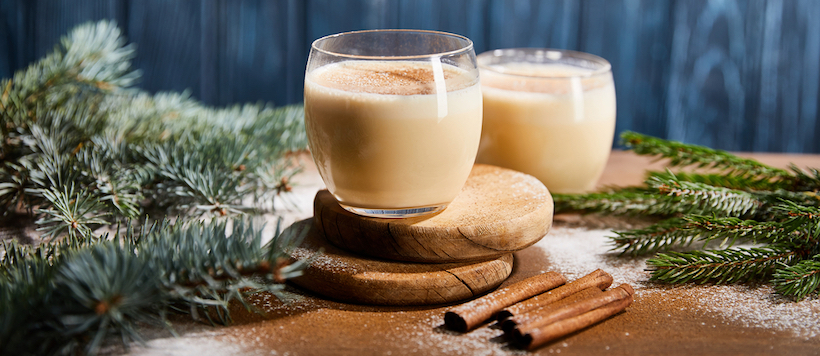
Eggnog can't even get its spelling straight. Depending on who (and where) you ask, it's various spelled "egg-nog" or "eggnog" or even "egg nog."
We're a bit more sure about eggnog's history – at least at a general level. Let's talk a bit about eggnog's origins and how it relates to some other drinks.
Medieval Britains receive credit for the creation of eggnog. Eggnog most likely evolved from the drink posset – a creamy, eggy drink often spiked with ale instead of eggnog's distilled spirits.
(Posset is also famous as Shakespeare's Lady Macbeth drugged her guards by slipping something into their posset)
Posset recipes often included some... interest... ingredients such as ambergris and musk, and traditional posset was (is) made with a base of curdled milk. Sounds delicious.
By the 13th century, eggnog had evolved as an expensive staple and toasting drink – monks drank eggnog with (uncurdled) milk and egg base, and to it included spices, figs, and sugar.
The English dessert, syllabub, was another dairy and egg drink. Although it enjoyed the height of its popularity in the 16th-19th century in England, it may too have inspired early eggnog.
Like eggnog, syllabub is made of a dairy product – but as a base, syllabub uses cream. To it, you add wine or hard cider along with sweetener and flavoring. A modern dessert form uses whipped cream, wine or sherry, sugar, and lemon juice.
Contrary to the possible ancestor claims of posset and syllabub, the drink known as the Tom and Jerry instead is a descendant of eggnog.
British journalist Pierce Egan takes the original credit for creating it in 1821 for the book Life in London; or, The day and night scenes of Jerry Hawthorn, esq., and his elegant friend Corinthian Tom.
A Tom and Jerry is essentially an eggnog variant where you add hot milk and rum. It became quite popular when it made it to the United States (in the middle 1800s).
The drink's popularity didn't slow down, either – President Warren G. Harding was a fan, and the drink eventually lent its name to a famous cat and mouse duo.
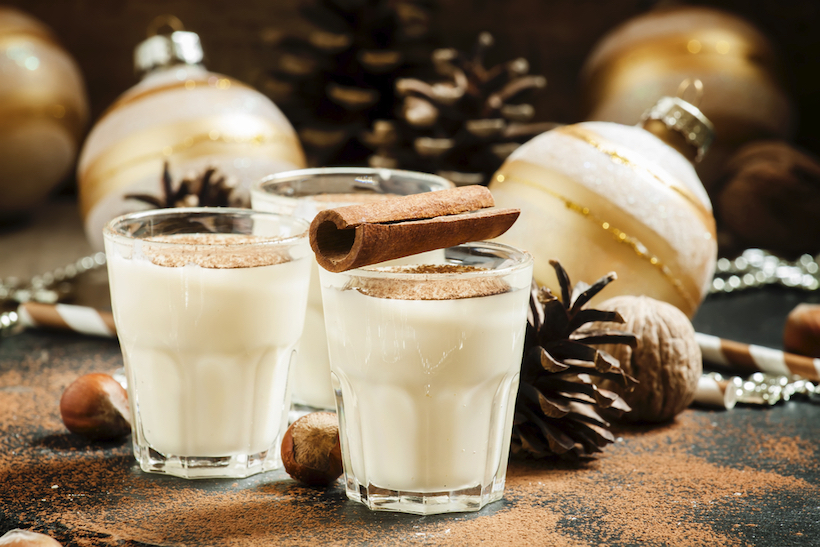
More complicated than eggnog and its drink siblings is, well, the etymology of eggnog.
(We'll skip the "egg" part, that one isn't so hard.)
While 1693 is the earliest discovered use of word nog – referring to a bottle of strong beer. It's possible that instead, the nog derives from a wooden cup (yes, often with alcohol) known as a noggin. Or, perhaps, it evolved from the Scottish nugg or nugged ale - ale warmed by a hot stirrer.
One final line of thinking instead credits the word grog, essentially watered-down rum. In that telling, eggnog started first as egg-n-grog, and eventually lost the "g" (perhaps after our anonymous heroes had too many eggnogs).
However the name evolved, by the time eggnog made it to the American colonies, the name was well established.
But the actual origin? Your guess is as good as mine. The theories are certainly fun, though.
Speaking of the colonies, eggnog's popularity took off when it made it to America.
Eggnog in America has a fascinating history – the South and North made their nog slightly differently, and early presidents and historical figures all had opinions on eggnog. Eggnog also factored in one of the most raucous and infamous parties ever (more in a second).
In the colonies, farms abounded – a massive difference from eggnog's early history where only nobles and bishops could get their hands on eggnog's essential ingredients.
Instead, the colonies were awash with eggs and milk, making eggnog an easier drink to create.
In early America, tax policies drove a lot of history. Eggnog, too, recounts a tax-related quirk – England provided the colonies with brandy and wine but levied heavy taxes on the spirits. Northern colonies, naturally, turned to rum from the Caribbean trade as a cheaper alcoholic ingredient in their nog.
Interestingly, the South took a different approach after the American Revolution. Instead of mixing ale or rum to make their nog, the South turned to bourbon – and made a particularly strong and rich variant of eggnog.
America's first President George Washington had a strong opinion on the drink – and pun intended because his variant was heavy on the alcohol.
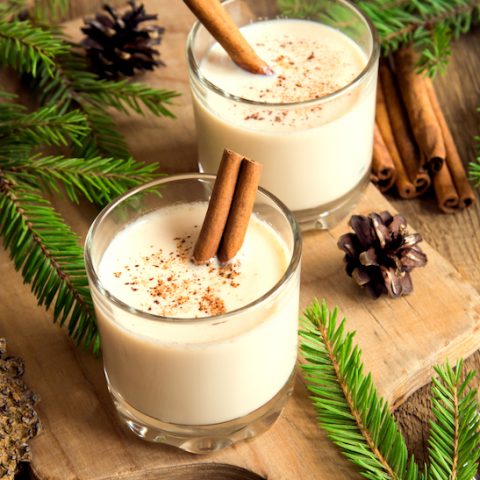
George Washington's eggnog recipe.
“One quart cream, one quart milk, one dozen tablespoons sugar, one pint
brandy, 1/2 pint rye whiskey, 1/2 pint Jamaica rum, 1/4 pint sherry —
mix liquor first, then separate yolks and whites of eggs, add sugar to
beaten yolks, mix well. Add milk and cream, slowly beating. Beat whites
of eggs until stiff and fold slowly into mixture. Let set in cool place
for several days. Taste frequently.”
* Per Time, if you want to create the recipe try using a dozen eggs
Eggnog has only grown more popular than it was during America's colonial era. Still, there are a few incidents and events that stick out in eggnog's path to the holiday staple you know and (possibly) love.
One of the most infamous parties in America's history led to 1826's appropriately named Eggnog Riot.
At the US Military Academy in West Point, Colonel Sylvanus Thayer ("The Father of West Point") had banned alcohol possession and intoxication years earlier – save for parties on the Fourth of July and Christmas.
Due to a party-gone-wrong in 1825, Colonel Taylor banned alcohol entirely in 1826. While the dry July 4th party went off without a hitch, cadets schemed and snuck in alcohol to avenge the banning of eggnog during that year's holiday party.
The chaperones went to bed around midnight, leaving the (until then) tame party to die out on its own. Instead, they reawoke around 4 AM to a loud, drunken party spread across multiple dorms. Although the first guard on the scene – Captain Ethan Allen Hitchcock – tried to send everyone to bed, somewhere between 70-90 cadets took up arms against the chaperones!
Luckily, no one died – but the ensuing brawl did a fair amount of damage to the grounds and buildings. It also led to the court-martialling of 19 cadets and one enlisted soldier – and many expulsions.
A few historically famous cadets participated in the riots. Notably:
Because of the alcoholic content in tradition eggnog, the Prohibition era from 1920 to 1933 reduced its consumption.
Whether prohibition helped give rise to the bottling of non-alcoholic eggnog in the 1940s is hard to tell.
(And how people thought about dry eggnog at first is a question as well)
An article published in 1951 did mention the availability of bottled alcoholic and non-alcoholic eggnog. By the 1960s, bottled eggnog had gained widespread acceptance.
Like President Washington ahead of him, President Dwight Eisenhower – President of the United States from 1953-1961 – liked eggnog, and he also shared his recipe.
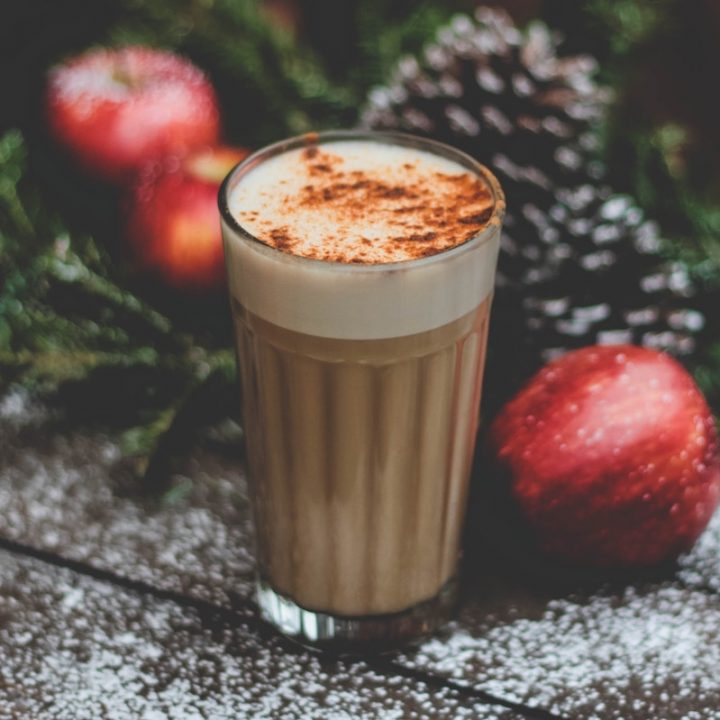
Dwight Eisenhower’s eggnog recipe
Put the dozen egg yolks in an electric mixer. Feed in the granulated
sugar very slowly as to get a completely smooth, clear light
mixture. When this is perfectly smooth, begin
to add the bourbon very slowly. (The process up to here would typically
consume at least 30 minutes -- with a good mixer.) Add one quart of coffee
cream.
Put the whole thing in the ice box until a half hour before serving,
at which time the whipping cream should be beaten until only
moderately thick. Be careful not to get it too thick. Mix it slowly
into the mixture and serve with nutmeg.
Eggnog is extremely popular today and a staple of the Holidays. Unfortunately (in my opinion, of course), most people are introduced to eggnog via a watered-down, low-egg content, overly sugared supermarket brand.
While the eggnog most folks drink is questionable, it's undeniably an extremely popular drink in November, December, and January – in the United States and all around the world.
As eggnog evolved from posset – a special occasion drink often used for toasting – it cemented its status as a seasonal, special drink early. We also tend to associate the spices commonly found in eggnog – cinnamon, in particular – with the Christmas Holiday.
On top of that, the warmer variations are perfect in the winter.
A lot. At least in America.
The USDA revealed in 2017 (PDF) that the US consumed a whopping 134,000,000 pounds of eggnog in 2016. Slate traced the history back and saw that eggnog sales have approximately quadrupled since the 1950s.
(The USDA also credits Jamestown, in Virginia, with first adding eggs to posset – I'll let you argue that one out).
Basic homemade eggnog uses egg, milk or cream, sugar, alcohol, and spices.
These are the same ingredients used in ice cream and custard – some variations simply use vanilla ice cream in place of the mixture. Other recipes use condensed or evaporated milk, whipped cream, and un-whipped heavy cream. The cream provides a frothy texture.
In many recipes, the eggs are first separated, and both whites and yolks are whipped. Other ingredients sometimes used in place of sugar are brown sugar and maple sugar.
Commercial varieties use other ingredients in place of eggs and cream. In the United States, eggnog might contain as little as 1.0-percent egg yolk. In Canada, eggnog must (appropriately) contain eggs to be labeled eggnog.
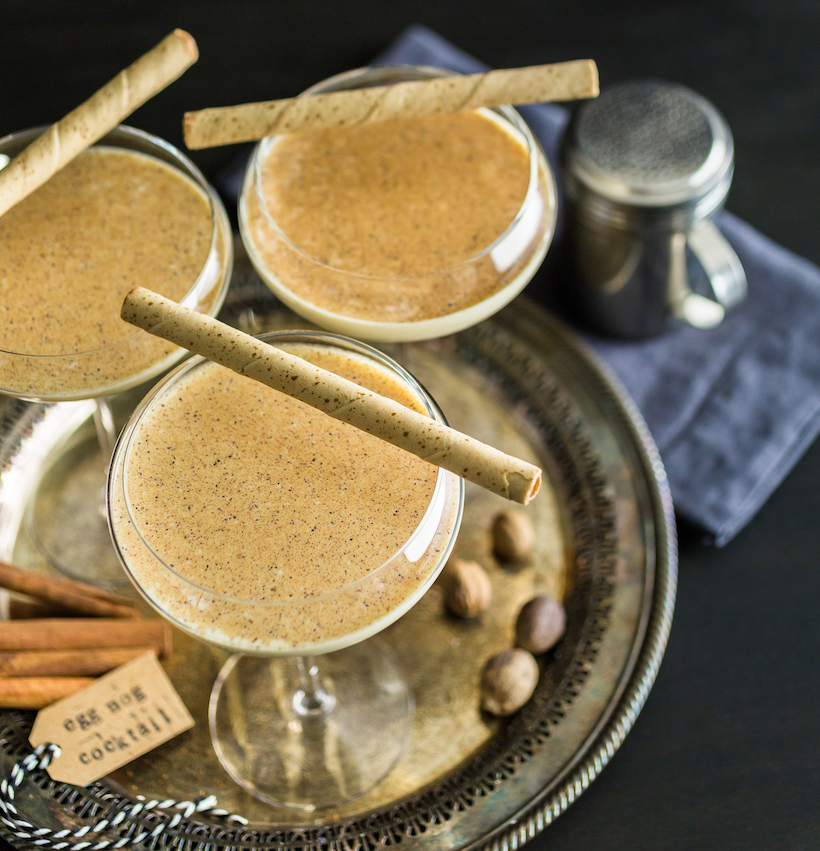
The traditional spices used in eggnog are:
However, other flavorings are now being added to eggnog. These include pumpkin and sugar cookie.
(I mean, people add pumpkin spice to everything, nowadays.)
For parties, there are multiple ways to serve eggnog.
Glasses, mugs, or stemmed brandy snifters work well when you're adding whipped cream, grated nutmeg, a cinnamon stick, ground cinnamon, chocolate shavings, or a vanilla pod as a topping.
Alternatively, put your nog in a serve-yourself punch bowl so folks can ladle into their glasses. And – of course – there are plenty of alcoholic eggnog drinks.
Eggnog flavored foods are also trendy during the holiday season.
These foods include eggnog flavored cakes, cupcakes, rum cake, pie, ice cream, milkshakes, lattes, coffee creamer, cookies, biscotti, bread pudding, and French toast.
Traditionally, yes, eggnog included raw egg.
However, that's anathema to Americans, who are told to avoid raw egg due to salmonella risks. Americans are told to pre-cook eggs (lightly) before using them in dishes. Most store-bought varieties use pasteurized eggs in the mixture.
For safety, I suggest following that warning. Especially follow that warning if you are susceptible to food poisoning – in particular, pregnant women and folks with a compromised immune system should avoid raw eggs.
(Raw eggs can be dangerous for anyone, though.)
Alcohol is a bactericide, but it will not sterilize contaminated eggs. If you are drinking uncooked or under-cooked eggnog, you could be at risk for food poisoning.
The options are numerous for adding alcohol to eggnog – bourbon, dark rum, spiced rum, cream liqueur, stout, brandy, or apple brandy can be added during mixing or after the eggnog is served.
Because the alcoholic content can be an unknown factor, err on the side of caution when consuming alcoholic 'nog you didn't make. Drinking responsibly can prevent you from making a serious mistake – such as starting a brawl on par with the Eggnog Riot of 1826.
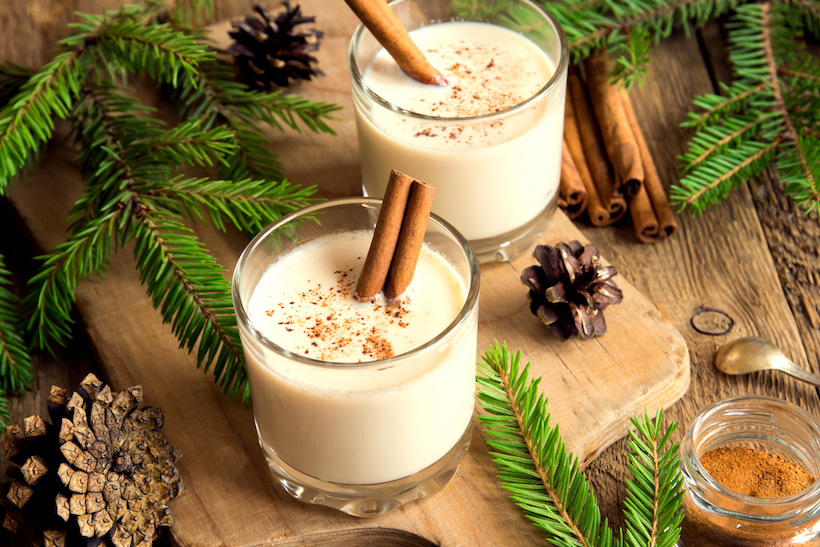
Eggnog – or an eggnog variant – is popular all around the world. Here are some eggnog relatives in countries around the world:
Now you know more than you thought you wanted to about the history and evolution of eggnog. It's undoubtedly a fascinating drink and a historical one – we can't fully trace its origins, but it has hundreds of years of history.
So next time you raise a glass, know that many before you have done the same – in good spirits and health. Whether you celebrate Christmas or not, I hope you enjoy your eggnog – and enjoyed this post.
Hi,
Just to add to your informatiopn, Egg Nog is older than medieval times. A version of Eggnog was made by the Vikings and drank in Shetland (Scotland). Known as Whipkull, it was made using a dozen egg yolks, a pound of sugar, half a pint of rum and a quart of fresh cream